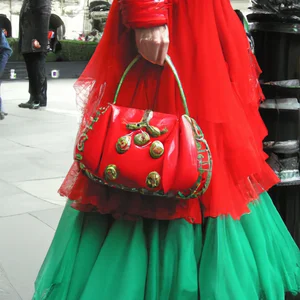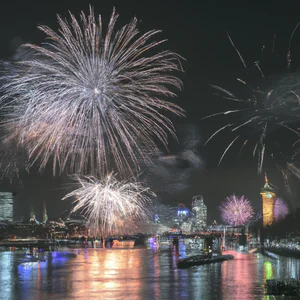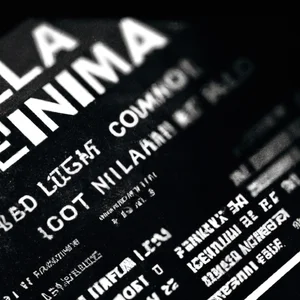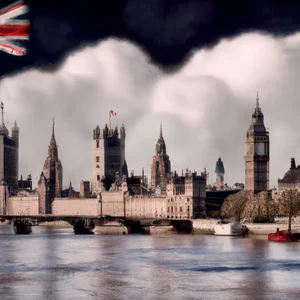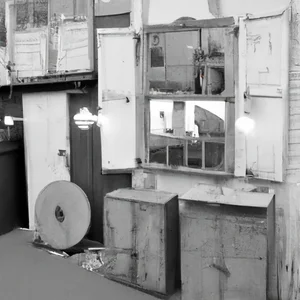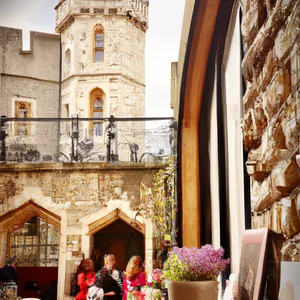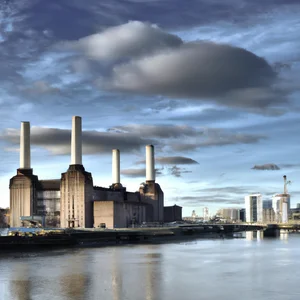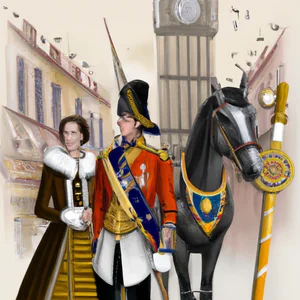Book your experience
Churchill War Rooms: journey into the secret bunker of the Second World War
So, let’s talk about the Churchill War Rooms, a truly fascinating place, a bit like taking a dive into the past, but with a war film twist. Imagine descending into a secret bunker, where the fate of entire nations was decided during the Second World War. It’s a bit like entering a historical novel, but without the period clothes, eh!
When I went there for the first time, I remember that the atmosphere was heavy, but electrifying at the same time. There were those narrow, dark corridors, which made you feel like you were walking in the footsteps of Churchill himself. To tell the truth, I wasn’t really sure, but I could almost hear the echo of his words. A little creepy, but fascinating, you know?
The thing that struck me most was the operations room, with all those maps and warning signs. It was like a giant game of chess, but with the world at stake. The guys in there must have been real geniuses, always on the move, with ringing phones and an energy that sent shivers down your spine. It really gives you the idea that, in those moments, any decision could change the fate of the war. I think there’s a certain magic in this, a huge difficulty in having to make such heavy decisions.
And then, there are also objects from that time, such as typewriters and yellowed maps. It makes you feel a bit like a detective in a film noir, where every piece of story has its weight. In fact, I imagined myself writing a report in there, with cigarette smoke hanging in the air and keys clicking. An experience that will leave a lasting impression on you, without a doubt!
In short, visiting the Churchill War Rooms is a bit like opening a history book and finding yourself catapulted inside. Of course, it’s not exactly like a ride in a park, but for those who love history and the stories that hide behind the facts, it’s a stop not to be missed. If it happens to you, go for it, you won’t regret it!
Churchill War Rooms: journey into the secret bunker of the Second World War
An immersive experience at the heart of history
When I crossed the threshold of Churchill’s bunker, the feeling of being transported back in time was immediate. The stone walls, dim lighting and distant sound of a humming generator created an almost palpable atmosphere, as if crucial decisions from World War II were still echoing through the rooms. I remember seeing a map of Europe hanging on a wall, with signs and notes telling stories of strategy and hope. In that moment, I understood that every corner of this bunker hid a part of our common history.
Practical information on Churchill’s bunker
Located in the heart of London, the Churchill War Rooms is part of the Imperial War Museum and is easily accessible by tube, getting off at the Westminster stop. The museum is open every day from 9.30am to 6pm, with last admissions at 5pm. Tickets can be purchased online, thus avoiding long queues. It is advisable to book in advance, especially on weekends.
A little-known tip
One aspect that few people know is that, in addition to the standard tour, it is possible to book a private bunker experience, which offers access to sections normally closed to the public. This exclusive tour includes stories and anecdotes from historical experts, making the visit even more fascinating.
The cultural impact of Churchill War Rooms
The bunker is not just a place of remembrance, but a symbol of British resilience. It was here that Winston Churchill and his government made decisions that changed the course of the war and, consequently, the history of the world. His importance is reflected not only in history books, but also in popular culture, where the figure of Churchill is often celebrated as a beacon of determination and courage.
Sustainability and responsible tourism
Churchill War Rooms is committed to sustainability. The museum adopts ecological practices, such as the use of renewable energy and the recycling of materials. By visiting the bunker, you help support these efforts, making your experience not only memorable, but also responsible.
An activity not to be missed
During your visit, don’t miss the opportunity to explore the Churchill Museum, which offers further insight into the lives of Churchill and his contemporaries. Here you will find historical documents, photographs and memorabilia that will enrich your understanding of this crucial period.
Myths and misconceptions
A common misconception is that the bunker was only a shelter during bombings. In reality, it was a strategic operations center, where every decision was weighed and discussed in real time. On the surface, it might seem like a place of fear, but it was also a center of hope and determination.
Final reflection
After visiting the Churchill War Rooms, I wondered: what would our lives have been like if those decisions had not been made? History has the power to teach us, and this bunker is a testament to how courage and determination can change the destiny of a nation. I invite you to visit this extraordinary place and reflect on how yesterday’s choices influence our future.
Culture and History: Explore Churchill’s secret bunker
A personal experience at the heart of history
The first time I stepped into Churchill’s bunker, I was immediately struck by the feeling of being transported to another time. The rough concrete walls, fluorescent lights and echoing footsteps seemed to tell stories of crucial decisions that changed the course of history. It was as if time had stood still, and every corner of the bunker held a secret, a whisper of a tumultuous past.
A fascinating story of decisions that changed the world
Built in 1938 as a bomb shelter, Churchill’s bunker became the operational arm of the British government during World War II. Here, Prime Minister Winston Churchill and his aides made vital decisions, from the D-Day plan to the strategy against the Third Reich. Each room tells a story, and each object — from phones to documents — is a silent witness to choices that have shaped the fate of millions.
Practical information
To visit the bunker, the Churchill War Rooms is open daily from 9.30am to 6pm. It is recommended to book tickets online through the Museum’s official website, especially during the high season to avoid long queues. Guided tours are available in several languages and enrich the experience with historical details and fascinating anecdotes.
Unconventional advice
If you want a truly unique experience, I recommend visiting the bunker during the week, in the late afternoon. The sunlight filtering through the small windows creates an almost magical atmosphere, and the few visitors present will allow you to explore in peace.
The cultural impact of the bunker
Churchill’s bunker is much more than just a museum; it is a symbol of British resilience. The decisions made here not only influenced the course of the war, but also shaped modern British culture, inspiring works of art, literature and film. Its historical relevance is reflected in the continuous search for justice and freedom, values that still resonate today.
Sustainability and responsible tourism
The Museum promotes sustainable tourism practices, encouraging the use of public transport to reach the structure and launching environmental awareness initiatives. By choosing to visit the bunker, you are not only exploring a piece of history, but also helping to preserve cultural heritage for future generations.
A recommended activity
After the visit, I recommend stopping at one of the historic cafes nearby, such as The Red Lion, where you can enjoy a traditional afternoon tea. It’s the perfect place to reflect on newly discovered stories and imagine the conversations that took place in the bunker.
Myths to dispel
A common misconception is that the bunker was only a refuge for Churchill. In reality, it was a complex operations center, where strategic discussions took place between political and military leaders. Its functionality goes far beyond simple protection; it was the beating heart of the British resistance.
A final reflection
As you leave the bunker, you find yourself thinking: * what decisions are we making today that could change our future * The story of Churchill and his bunker invites us to reflect on how the past can inform us in the present? The next time you visit a historic place, ask yourself what stories might be hidden within its walls and how these might influence the way you see the world.
A journey through time: authentic settings
When I stepped into Churchill’s secret bunker, I felt as if I had been transported back in time. The soft light, the rough concrete walls and the air full of history created a palpable atmosphere. I particularly remember a corner of the bunker, where a map of the world, marked with troop movements during the Second World War, caught my attention. It was a silent reminder of the crucial decisions being made there, away from the public eye.
Authentic atmosphere
The bunker, located in the heart of London, has been preserved with meticulous care, maintaining the authentic settings that witnessed historic encounters. The rooms are furnished with period objects, such as dark wooden desks and oil lamps, which recreate the environment in which Churchill and his staff planned strategies vital to the survival of the United Kingdom. Every corner tells a story, every object has a meaning. It is not just a place to visit, but an experience to live.
An insider tip
If you really want to immerse yourself in the atmosphere of the bunker, I recommend booking a visit during less crowded hours, such as early afternoon on weekdays. Not only will you have the chance to explore the rooms without the crowds, but you may also come across a guided tour led by a former curator, who will share intimate anecdotes and little-known details about Churchill and his team.
The historical impact
Churchill’s secret bunker is not just a simple museum, but a symbol of the difficult choices made in a time of crisis. Its existence helped shape the narrative of British resilience and its cultural impact is visible today, influencing how London remembers the war. This place is a reminder of collective memory, a testimony of an indomitable spirit in times of adversity.
Sustainability and responsible tourism
Visit the bunker with the knowledge that the museum promotes responsible tourism practices. The managing body invests in initiatives to reduce environmental impact and to educate visitors on the importance of history and culture. Choosing to visit the bunker is also a sustainability choice: part of your entrance ticket goes to supporting the conservation of the historical heritage.
Sensory immersion
Imagine walking down the corridors of that bunker, with the sound of your footsteps echoing off the concrete walls. The scent of history mixes with the smell of dust and aged wood, creating a unique sensorial experience. It’s as if time has stopped, allowing you to perceive the tensions and hopes of a bygone era.
Activities not to be missed
Don’t miss the opportunity to participate in one of the special evenings organized in the bunker, where historical documentaries and expert-led discussions are screened. It’s a great way to deepen your understanding of historical context and engage with other enthusiasts.
Myths and misconceptions
A common misconception is that the bunker was just a refuge for Churchill. In reality, it was a command nerve center, where many of the most important strategic decisions were made. Understanding this aspect significantly enriches the visiting experience.
In conclusion, I invite you to reflect on the resilience shown in times of crisis. How can we apply these lessons in our modern world? Churchill’s secret bunker is not just a place to visit, but an invitation to explore the complexities of the past and consider our role in shaping the future.
Guided tours: a unique immersive experience
An entry into the heart of history
I vividly remember my first visit to Churchill’s secret bunker, a labyrinth of rooms and corridors that wind beneath the streets of London. The guide, a passionate historian, welcomed us with a surprising anecdote: during the Second World War, this underground refuge was not only a place of strategy, but also a center of daily life for members of the British government. Imagine finding yourself in a conference room lit by oil lamps, while leaders discussed the fate of a nation at war. That feeling of being in the middle of history is what makes these guided tours so special.
Practical and up-to-date information
Visits to the bunker are currently available in both Italian and English, with flexible times to meet the needs of tourists. Booking in advance is recommended, especially during high season. You can find further details about visits on the official Churchill War Rooms website. Access is easily accessible from Westminster tube station, making this trip into the past particularly easy.
An insider tip
If you want a truly unique experience, I recommend taking one of the night visits. These exclusive tours will take you to explore the bunker in an enveloping atmosphere, with soft lights and the echo of voices from the past that seem to fill the spaces. It’s a way to feel even more immersed in the life of those tumultuous years.
Cultural and historical impact
The bunker is not just a museum; it is a symbol of British resilience. The decisions that were made here influenced the course of world history. The atmosphere you breathe is full of meaning, a testimony to the determination of a people in the face of darkness. Each visit is an invitation to reflect on how fragile peace can be and how political choices can have lasting repercussions.
Sustainability and responsible tourism
The museum has also adopted several sustainability practices, such as using recycled materials and implementing energy saving systems. Participating in these visits means not only exploring history, but also supporting responsible and conscious tourism.
Immerse yourself in history
Walking through the corridors of the bunker is like leafing through a living history book. The walls tell silent stories, while the objects on display evoke images of courage and determination. Every corner seems to whisper secrets of a bygone era, making the visit a deeply engaging experience.
Recommended activity
In addition to the visit to the bunker, I suggest you take part in a history workshop organized nearby, where you can further delve into the dynamics of the Second World War through interactive activities.
Myths to dispel
A common misconception is that the bunker was only a refuge for British leaders. In reality, it was a fast-paced workplace, where they coordinated attacks and strategies. This aspect makes the visit even more fascinating, revealing the humanity and vulnerability that lay behind the political decisions.
Final reflection
Every visit to Churchill’s secret bunker poses a question: what would we do in a crisis situation? The decisions of those times continue to reverberate in the present, inviting us to reflect on how history can influence our future. Come and discover the secrets of this extraordinary place and let yourself be transported to an era that changed the world.
Historical curiosities: secrets never revealed
A Personal Anecdote
I vividly remember my first visit to Churchill’s Bunker, a place shrouded in an atmosphere of mystery and history. As I descended the metal stairs, the echoes of my footsteps seemed to tell stories of strategy and determination. A passionate guide, with an enigmatic smile, revealed to me that many of the documents kept here have been kept secret for decades. In that moment, I realized that every corner of that bunker carried with it a piece of history that had shaped the destiny of the world.
Practical Information
Situated in the heart of Westminster, Churchill’s Bunker is easily accessible by public transport. The museum is open every day from 9.30am to 6pm, but it is advisable to book tickets online to avoid long queues. For up to date information on special events or temporary exhibitions, visit the official [Churchill War Rooms] website(https://www.iwm.org.uk/visit/churchill-war-rooms).
An Unconventional Advice
If you want an even more immersive experience, I recommend taking part in one of the bunker’s occasional night visits, where the soft lights and silent atmosphere make the place even more evocative. These visits are less crowded and offer the opportunity to explore the secrets of the bunker in an almost magical setting.
The Cultural and Historical Impact
Churchill’s Bunker is not just a museum; it is a symbol of British resilience during the Second World War. Decisions made in those rooms have had global repercussions, influencing military strategies and allies around the world. The history of this place is intertwined with the collective memory of the British people, a constant reminder of what was sacrificed for freedom.
Sustainable Tourism Practices
The museum is committed to promoting responsible tourism practices, encouraging visitors to use public transport to reach the site and offering visiting methods that minimize environmental impact. Additionally, the museum works with local initiatives to preserve London’s history and culture.
An Activity to Try
After your visit to the bunker, don’t miss the opportunity to explore nearby St. James’s Park. Here you can walk among the ancient trees and ponds, a perfect place to reflect on what you have just seen and heard.
Addressing Common Myths
A common misconception is that Churchill’s Bunker was only a refuge for the prime minister. In reality, it was a nerve center for over 500 members of the government and military, all busy planning vital operations. The complexity and grandeur of the structure are astonishing and deserve to be fully explored.
Final reflection
As I left the bunker, I wondered what legacy we are leaving for future generations. Each visit to this place full of history invites us to reflect not only on the past, but also on how the decisions we make today can influence the future. Are you ready to discover Churchill’s secrets and understand how history continues to shape us?
Sustainability: how the museum promotes responsible tourism
I vividly remember my first encounter with Churchill’s secret bunker. As I walked down the concrete stairs, the scent of humidity and the sound of my shoes clattering in the hushed calm transported me back in time. But what struck me most were not just the dark rooms and yellowed maps; it was the museum’s commitment to promoting responsible and sustainable tourism, an aspect that often takes second place in tourist experiences.
An eco-conscious approach
The Churchill War Rooms Museum has adopted a number of sustainable practices, such as the use of renewable energy and promoting public transport to reach the facility. Each year, the museum partners with local organizations to reduce its environmental impact and encourage visitors to choose greener travel options. According to recent reports, 60% of visitors use sustainable transport such as the tube or bicycles, thus helping to keep London cleaner.
An insider tip
If you want to immerse yourself in a sustainable experience, consider booking a visit during the eco days promoted by the museum, where you can participate in events and workshops dedicated to history and sustainability. These events also offer the chance to interact with experts and curators, opening you up to new perspectives on the history of the bunker and its impact on contemporary society.
Cultural and historical impact
Churchill’s bunker is not only a monument to the Second World War, but also a symbol of resilience and innovation. Its preservation and opening to the public help keep historical memory alive, while educating visitors about the importance of sustainable practices. In a world where climate change is a reality, places like this demonstrate how history can teach us to be more responsible in the way we travel and interact with the environment.
An unforgettable experience
During your visit, don’t miss the opportunity to explore the museum’s garden, a green area that serves as a refuge for local wildlife and a place to relax for visitors. This haven of tranquility is designed to be sustainable, with native plants that require little maintenance and water.
Myths to dispel
A common misconception is that the bunker is just a place of war, with no educational value today. In fact, the museum is an example of how history can be used to promote a better future. The bunker’s narrative is infused with lessons about leadership, strategy, and civic responsibility that are more relevant than ever.
In conclusion, next time you explore Churchill’s secret bunker, consider how tourism can be an opportunity to learn and contribute to a more sustainable future. What impact would you like to have on the world through your travel choices?
Meeting the curators: stories behind the scenes
A personal experience that makes you think
The first time I walked through the doors of Churchill’s secret bunker, I didn’t know what to expect. As I moved through the dark, dank rooms, a local curator, David, approached me. With a warm smile, he began to tell stories of life lived inside those walls, stories you won’t find in tourist guides. “Every object here has a story to tell,” he said, as he pointed to an old rotary telephone, a symbol of the defining moments of World War II. That conversation sparked a curiosity in me that led me to explore not only the bunker, but also the lives of those who inhabited it.
Practical and up-to-date information
Currently, the bunker is managed by Imperial War Museums and offers regular guided tours, but for a more intimate experience, I recommend booking a private tour. These tours are led by expert curators who share little-known anecdotes and historical details. Tours take place every day, but you can find more information on prices and prices timetables on the official [Imperial War Museums] website (https://www.iwm.org.uk).
Unconventional advice
If you want a truly unique experience, try taking one of the Behind the Scenes Tours that are occasionally organised. During these events, curators will show you areas not accessible to the public and share stories you won’t find elsewhere. It is a rare opportunity that offers an unprecedented glimpse into the daily life of Churchill and his collaborators during the war.
The cultural impact of the bunker
The bunker is not only a place of historical interest, but a symbol of British resilience. The decisions made here not only shaped the course of the war, but also influenced popular culture, inspiring films, books and documentaries. The figure of Churchill, with his powerful oratory and leadership, continues to influence contemporary British politics and culture.
Sustainability and responsible tourism
Visit the bunker with a keen eye on sustainability. Imperial War Museums promotes environmentally friendly practices, such as the use of recycled materials for exhibitions and initiatives to reduce environmental impact. Taking a tour here also means supporting an institution that is committed to preserving history for future generations.
Immersion in the historical atmosphere
As you walk through the corridors of the bunker, the atmosphere is palpable. The enveloping darkness, interrupted only by the cold lights of the street lamps, transports you to a time when decisions were made hastily, with the entire world in the balance. The distant sounds of bombing and the voices of men and women engaged in a fight for freedom still echo in the ears of those who visit.
Experiences to try
Don’t just explore the bunker; Take part in a regularly held interactive workshop where you can learn how people communicated during the war through codes and secret messages. It’s a fantastic way to understand the strategy and creativity that characterized daily life during that time.
Myths and misconceptions
A common misconception is that the bunker is a cold and austere place, devoid of humanity. In fact, the stories told by the curators demonstrate that, despite the war, there was a strong sense of community and solidarity among the people who worked there. Laughter and hopes for a better future echoed within those walls.
Final reflection
After listening to the curators’ stories and walking among the objects that made history, I asked myself: how will today’s decisions shape our future? This is the power of history: it invites us to reflect and learn, so that the past is not forgotten. A trip to Churchill’s bunker is not just a tourist experience, but a life lesson to take with us.
An unconventional tip: visit at unusual times
Imagine finding yourself in the heart of London, at the foot of the door that leads to one of the most emblematic places in contemporary history: the Churchill War Rooms. One afternoon, while walking along Whitehall, I was lucky enough to visit the bunker at an unusual time, just before it opened to the public. The city was still shrouded in silence and calm, a stark contrast to the echoes of the bombings that had resonated in that place during the war. That moment offered me the opportunity to perceive the unique atmosphere of this underground refuge, before the crowds of tourists invaded it.
Why visit at unusual times
Visiting the Churchill War Rooms at less crowded times, such as early morning or late afternoon, not only allows you to avoid the crowds, but also offers a more intimate and contemplative experience. The architectural details, the dark rooms lit by dim bulbs, and the palpable history that permeates the air become more apparent when you are not surrounded by large groups. Furthermore, the tranquility allows one to reflect on the importance of the decisions that were made there, while the echoes of the past seem to resonate louder.
An insider tip
A little-known secret is that if you visit on a weekday, you may have the chance to join an exclusive guided tour with a local expert. These tours, which depart before the official opening, offer unique insights and anecdotes not found in standard audio guides. Check the official Churchill War Rooms website to book in advance and guarantee your place.
The cultural impact of the War Rooms
The Churchill War Rooms are not just a museum; they are a symbol of British resistance and a monument to the determination of a people in the face of the horror of war. This place has inspired many artistic and literary works, becoming a point of reference for understanding the history of the Second World War and the crucial role of Winston Churchill. The visit to this bunker is a way to pay homage to those who lived through those difficult times and to reflect on how the past continues to influence the present.
Responsible tourism practices
Visiting the Churchill War Rooms at unusual times not only enriches the experience, but also contributes to a more sustainable form of tourism. Avoiding rush hours reduces environmental impact and allows for more efficient management of museum resources. Additionally, every ticket purchased supports the preservation and maintenance of this important historic site.
An activity worth trying
After your visit, I recommend taking a stroll along nearby St. James’s Park. Treat yourself to a moment of tranquility as you enjoy a takeaway coffee at one of the park’s kiosks, reflecting on what you’ve just seen and taking in the serene atmosphere of London. It’s a perfect contrast to the intense and tumultuous history that lies beneath the surface.
In conclusion, next time you plan a visit to the Churchill War Rooms, consider doing so at an unusual time. Not only will you have a deeper experience, but you will also have the chance to connect with history in a way that many tourists miss. What other hidden stories await you in this extraordinary corner of London?
Local flavour: Cafes and restaurants around the Churchill War Rooms
When I visited the Churchill War Rooms, the thrill of being in a place so steeped in history was palpable. But it wasn’t just the charm of the bunker that caught my attention; the culinary context surrounding this historical treasure also made my experience truly memorable. After exploring the secret rooms where Winston Churchill and his team made crucial decisions, I ventured out to the nearby cafes and restaurants, and I have to say, it was a great choice!
A dive into local flavors
Just a few steps from the War Rooms, I discovered The Red Lion, a traditional British pub that exudes a welcoming and historic atmosphere. Here, I was able to savor a classic fish and chips, a true delight that almost seemed like a ritual after such an intense visit. If you fancy a more refined dining experience, don’t miss Browns Covent Garden, where dishes inspired by British cuisine blend with international influences in an elegant setting. Both places are perfect to take a breath and reflect on the importance of the history you have just experienced.
Insider tip
Here’s a little-known tip: If you’re in the area, try visiting Café in the Crypt in St. Martin-in-the-Fields, which offers a selection of fresh, sustainable dishes. It’s a perfect option for lunch without straying too far from the War Rooms, and its unique crypt setting adds a touch of mystery to the experience culinary. Additionally, the cafe uses local ingredients, contributing to responsible tourism practices.
Cultural impact and reflections
This mix of history and gastronomy is not only a way to refresh yourself, but also represents a fundamental aspect of London culture. Restaurants and cafés are not just places to eat, but are real meeting points where stories, experiences and traditions intertwine. It’s interesting to see how, in a city so rich in history, culinary culture continues to evolve and be reflected in the everyday experiences of Londoners.
Questions to consider
After enjoying a good dish, I invite you to reflect: how can the gastronomic culture of a place enrich our understanding of its history? The next time you visit a historic site, take a moment to also explore the culinary context that surrounds it surrounds. Who knows, you might discover another layer of the story you never imagined!
War culture: the impact on London today
An indelible memory
During one of my walks along the streets of London, I found myself reflecting on an anecdote that struck me deeply. It was a rainy morning, and as I sought shelter in a small cafe in Covent Garden, I noticed a group of young people animatedly discussing how the history of the Second World War continues to influence London culture and daily life. What do we have left of that war past? was the central theme of their conversation. This episode inspired me to explore more deeply the lasting impact of wartime culture on London.
A historical legacy
Today, London is a living example of how the past can shape the present. The culture of war permeates every corner of the city, from memorials and historical museums to annual celebrations like Remembrance Day. Through the lens of history, we can see how the decisions made in Churchill’s secret bunker not only shaped the outcome of the war, but also the resilience and unity of the British capital. Local sources, such as the Imperial War Museum, tell stories of courage and sacrifice that continue to inspire generations.
An insider tip
If you want a truly unique experience, I recommend taking a night tour of the Churchill War Rooms, where history comes to life under the soft lamplight. During these visits, guides tell little-known anecdotes that offer a fascinating perspective on how the war shaped the city not only strategically, but also culturally. These tours are often less crowded, allowing you to explore the bunker with more intimacy.
The cultural impact
London carries a historical weight that is reflected in art, literature and music. The works of writers such as Virginia Woolf and George Orwell are imbued with a sense of urgency and change, expressing the tensions of an era marked by war. Furthermore, contemporary pop culture, from films to video games, continues to draw inspiration from these historical events, proving that the war is more than just a chapter in the history books: it is an integral part of London’s identity.
Sustainability in tourism
Many museums and historic sites in London are adopting sustainable tourism practices. For example, Churchill War Rooms has implemented measures to reduce environmental impact, such as the use of renewable energy and promoting public transport for visitors. Supporting these initiatives not only enriches your experience, but also helps preserve cultural heritage for future generations.
An activity not to be missed
After visiting the bunker, take time to explore nearby St. James’s Park. Here, you can relax surrounded by nature and reflect on what you have learned. This park, which has seen many historic events, is a great place to meditate on the legacy of the war and its impact on London today.
Myths and misconceptions
A common misconception is that war culture in London is just a series of commemorations and memorials. In reality, it is a living and dynamic dialogue between the past and the present, which continues to influence new generations. The war shaped not only the politics, but also the arts and social life of the city.
A personal reflection
As I left London, I asked myself: How can we, ourselves, learn from history to meet contemporary challenges? The answer may lie in a deep understanding of our cultural and historical roots. The culture of war, with all its complexities, offers us the opportunity to reflect on who we are and where we are going as a society.

 Architecture and Design
Architecture and Design Cities and Regions
Cities and Regions Culture and History
Culture and History Events and Festivals
Events and Festivals Fashion and Shopping
Fashion and Shopping Food and Wine
Food and Wine Nature and Adventure
Nature and Adventure Unique Experiences
Unique Experiences



















